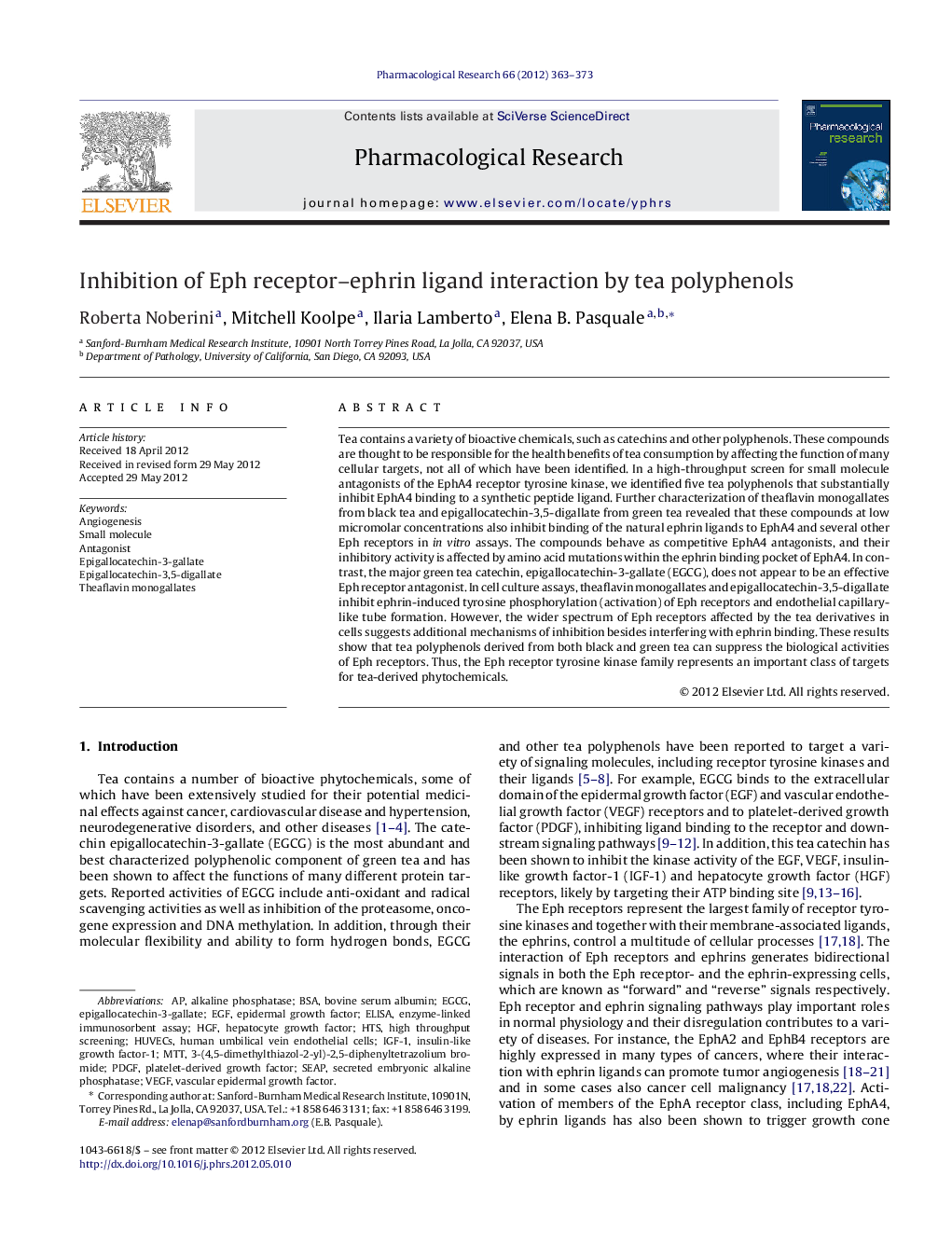| Article ID | Journal | Published Year | Pages | File Type |
|---|---|---|---|---|
| 2562071 | Pharmacological Research | 2012 | 11 Pages |
Tea contains a variety of bioactive chemicals, such as catechins and other polyphenols. These compounds are thought to be responsible for the health benefits of tea consumption by affecting the function of many cellular targets, not all of which have been identified. In a high-throughput screen for small molecule antagonists of the EphA4 receptor tyrosine kinase, we identified five tea polyphenols that substantially inhibit EphA4 binding to a synthetic peptide ligand. Further characterization of theaflavin monogallates from black tea and epigallocatechin-3,5-digallate from green tea revealed that these compounds at low micromolar concentrations also inhibit binding of the natural ephrin ligands to EphA4 and several other Eph receptors in in vitro assays. The compounds behave as competitive EphA4 antagonists, and their inhibitory activity is affected by amino acid mutations within the ephrin binding pocket of EphA4. In contrast, the major green tea catechin, epigallocatechin-3-gallate (EGCG), does not appear to be an effective Eph receptor antagonist. In cell culture assays, theaflavin monogallates and epigallocatechin-3,5-digallate inhibit ephrin-induced tyrosine phosphorylation (activation) of Eph receptors and endothelial capillary-like tube formation. However, the wider spectrum of Eph receptors affected by the tea derivatives in cells suggests additional mechanisms of inhibition besides interfering with ephrin binding. These results show that tea polyphenols derived from both black and green tea can suppress the biological activities of Eph receptors. Thus, the Eph receptor tyrosine kinase family represents an important class of targets for tea-derived phytochemicals.
Graphical abstractFigure optionsDownload full-size imageDownload high-quality image (134 K)Download as PowerPoint slide
